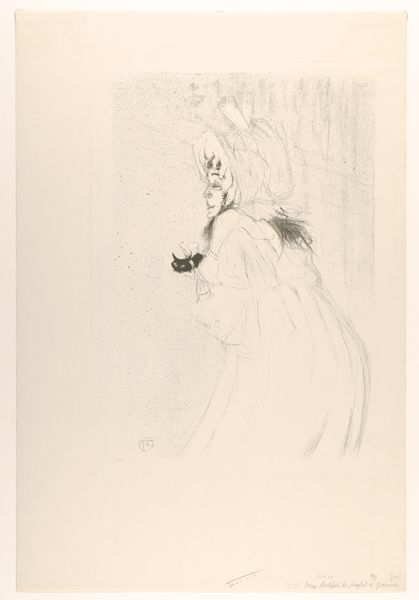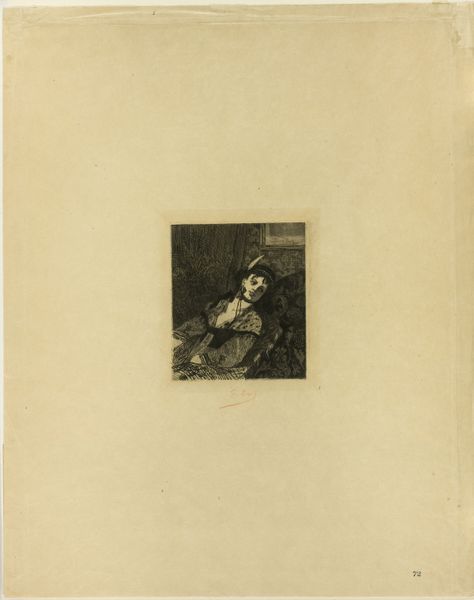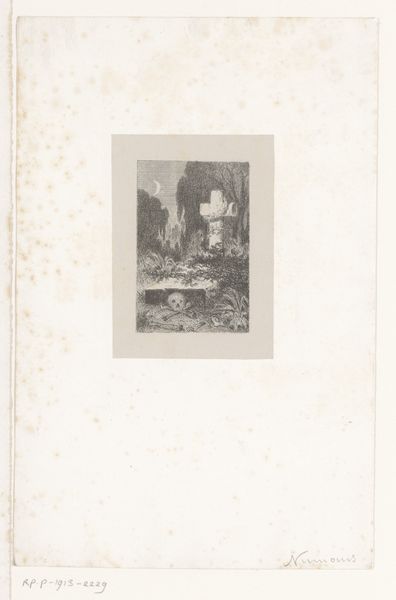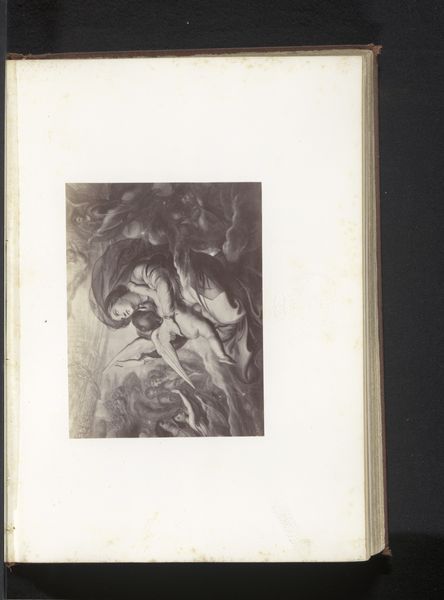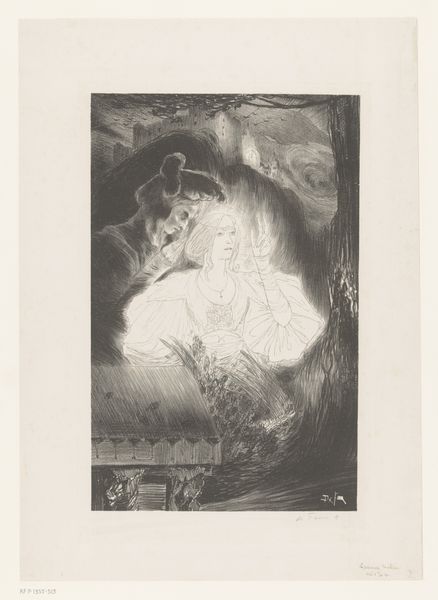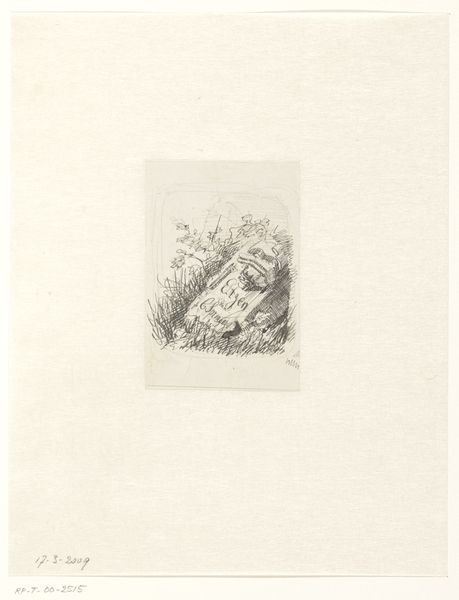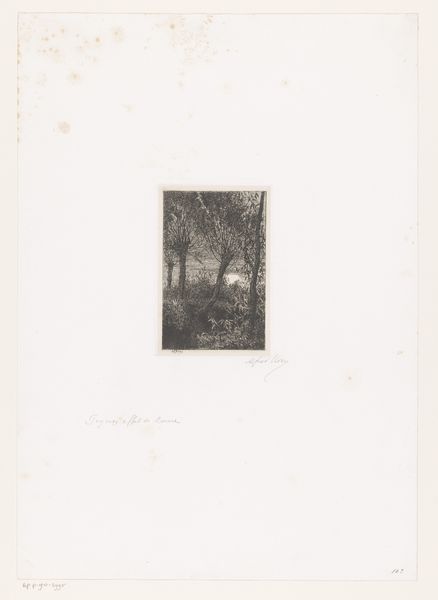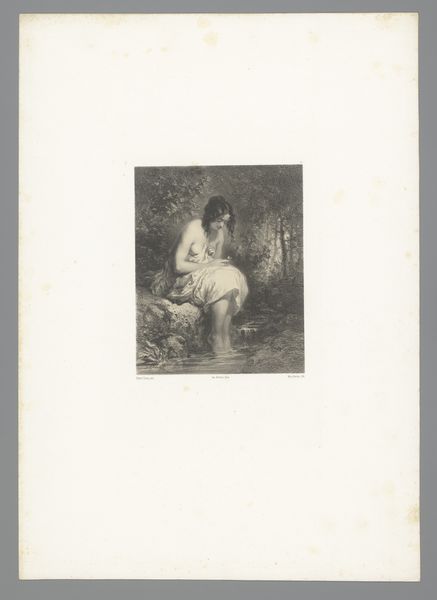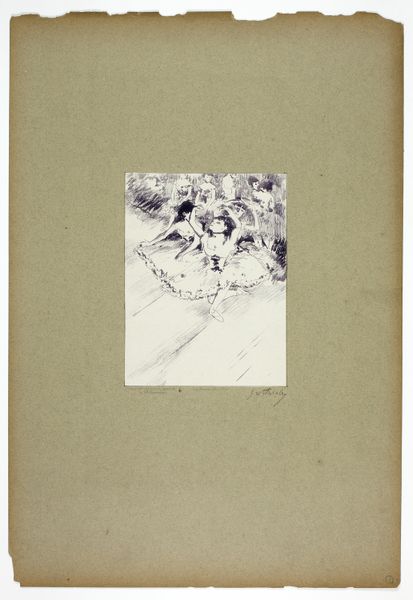
drawing, print, intaglio
#
portrait
#
drawing
# print
#
impressionism
#
intaglio
#
figuration
Dimensions: Plate: 3 1/4 x 2 3/4 in. (8.2 x 7 cm) Sheet: 7 1/16 x 5 3/16 in. (18 x 13.2 cm)
Copyright: Public Domain
Curator: Isn’t she mysterious? Degas captured this woman’s profile in "The Jet Earring," an intaglio print from around 1876 or 1877. The impression, now at the Met, has this striking intimacy about it, as if we're intruding on her thoughts. Editor: Yes, "intruding" is an interesting word choice. I feel the isolation in this piece, particularly given its placement on the page. It's a cropped image within a much larger blank space which really emphasizes a sense of detachment, like she's caught in a liminal state, an in-betweenness, especially as a woman in late 19th century France, perhaps on the cusp of dramatic social changes, though perhaps weighed down by them, as well. Curator: It’s like a snapshot, but from a very knowing eye. The angle, her elegant hairstyle, even the eponymous jet earring, it suggests so much about her, without really giving much away. It leaves so much room for interpretation... is she pensive? Bored? I almost feel I know her from across time. I’m telling you, that simple line does a lot of heavy lifting! Editor: And the title itself—"The Jet Earring"—immediately directs our gaze and assumes a narrative of sorts. Jet jewelry was often worn as a symbol of mourning in Victorian culture, potentially signaling a widow, or woman in mourning, further contributing to the theme of isolation. The dark, almost opaque earring contrasts starkly with the skin of her neck, drawing focus to her position, but also, as you hinted, offering no further clarification! Clever, but potentially exclusionary! Curator: You’re right, it could be limiting! For me, that almost obscured background adds another layer—perhaps a cafe, or even the bustle of Parisian life she is either disconnected or taking refuge from. There’s this immediacy in the technique that reminds me of charcoal sketches, even though it is actually a print. Editor: Definitely. And let’s acknowledge the fact that Degas had a complex relationship with his female subjects. Though considered an Impressionist, his approach to depicting women could often reinforce the male gaze. This particular portrait feels less overtly objectifying than some of his ballet dancers, though, but a social hierarchy of representation is always there. Curator: I like to think of art, like this image, as a silent conversation across the ages. We might bring our own biases and assumptions, but that's what makes the whole enterprise so endlessly compelling. Editor: Exactly. By interrogating both the historical context and our personal reactions, we hopefully develop a richer and more critical engagement with both the artwork and ourselves.
Comments
No comments
Be the first to comment and join the conversation on the ultimate creative platform.

